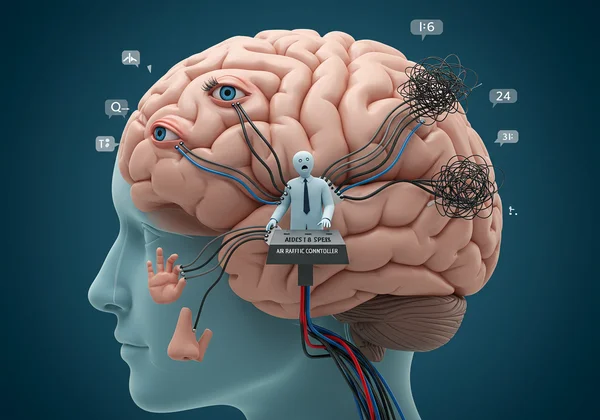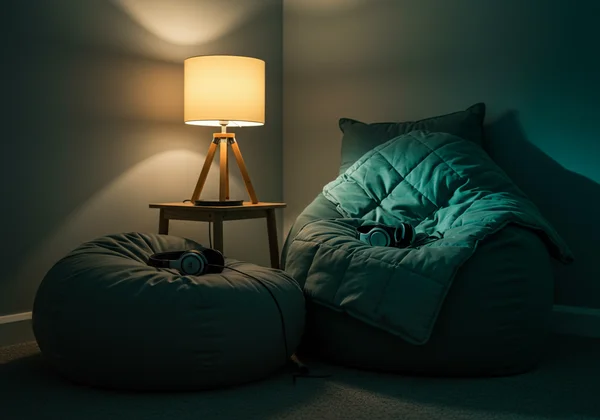Sensory Overload: Understanding Neurodivergence with Our Test & Coping Guide
Do you ever feel overwhelmed by loud noises, bright lights, or strong smells? If daily sensations leave you feeling drained, irritable, or anxious, you might be experiencing sensory overload, a common neurodivergent trait. You might be asking yourself, What are the signs of being neurodivergent? This guide will help you understand what's happening to your nervous system and provide practical strategies to navigate a world that often feels too loud, too bright, or simply too much. Beginning your journey of self-discovery can feel daunting, but understanding your unique profile is the first step, and a neurodivergence test can be a great starting point.

Understanding Neurodivergent Sensory Issues
For many neurodivergent individuals, including those who are autistic or have ADHD, the world is experienced with heightened intensity. What a neurotypical person might barely notice—a buzzing fluorescent light, the tag on a shirt, or multiple conversations happening at once—can feel like a full-blown assault on the senses. This isn't a matter of being "too sensitive"; it's a fundamental difference in how the brain processes incoming information from the environment.
What is Sensory Processing?
Think of your brain as a busy air traffic controller for your senses: sight, sound, touch, taste, and smell, as well as internal senses like balance and body awareness. Sensory processing is the complex neurological job of taking in all this information, organizing it, and deciding what to pay attention to and what to filter out. For neurotypical individuals, this process is mostly automatic and seamless. For neurodivergent people, the controller might be understaffed or the signals might come in too fast and loud, leading to a system crash—what we call sensory overload.

Hypersensitivity vs. Hyposensitivity: The Spectrum of Experience
Neurodivergent sensory experiences exist on a spectrum. You might be hypersensitive in some areas and hyposensitive in others, and these sensitivities can even fluctuate from day to day. Understanding where you fall on this spectrum is key to managing your sensory needs.
- Hypersensitivity (Over-responsive): This is when you are highly sensitive to sensory input. Common examples include finding normal lighting painfully bright, being unable to tolerate certain food textures, feeling distressed by unexpected touch, or being easily distracted by background noises.
- Hyposensitivity (Under-responsive): This is when you require more intense sensory input to register a sensation. You might crave spicy foods, love loud music, seek out tight hugs or weighted blankets, or not notice when you are cold or have a minor injury.
Recognizing these patterns in yourself can be incredibly validating. It explains why you might need sunglasses indoors or why you can't focus in a bustling coffee shop. It's not a personal failing; it's your unique neurology at work. If you're curious about where your traits might fall, you can take our free test to gain initial insights.
Recognizing the Signs of Sensory Overload
Sensory overload can manifest in different ways, and learning to spot your early warning signs is crucial for preventing a full shutdown or meltdown. It's more than just feeling annoyed; it's a physiological response.

Emotional Signs:
- Sudden irritability or anger
- Increased anxiety or a feeling of panic
- Feeling overwhelmed and wanting to cry
- A desperate need to escape the current environment
Cognitive Signs:
- Difficulty concentrating or "brain fog"
- Trouble processing what others are saying
- Slower thinking and response times
- Feeling disconnected from your body
Physical Signs:
- Increased heart rate or shallow breathing
- Tensing muscles, especially in the jaw or shoulders
- Covering your ears or eyes
- Restlessness or a sudden urge to stim (e.g., fidget, rock)
When you feel these signs, your body is telling you that it has reached its processing limit. The goal isn't to push through it but to listen and respond with compassion.
Practical Sensory Coping Skills for Neurodivergent Individuals
Learning to manage your sensory environment is an empowering act of self-care. It involves both modifying your surroundings and developing internal regulation skills. These sensory coping skills can transform your daily life from a constant battle into a more manageable experience.
Creating a Sensory-Friendly Environment: Your Personal Oasis
You have the power to curate your personal spaces to better support your nervous system. Start with your home or workspace. Consider incorporating a "sensory corner" or a dedicated quiet space where you can retreat to decompress.
-
Lighting: Swap harsh fluorescent bulbs for warm, dimmable LED lights. Use lamps instead of overhead lighting and keep curtains drawn on bright days.
-
Sound: Invest in high-quality noise-canceling headphones. Use a white noise machine to mask jarring background sounds.
-
Touch: Fill your space with textures you find comforting, like soft blankets or weighted pillows. Choose clothing made from natural, non-irritating fabrics.
-
Smell: Use essential oil diffusers with calming scents like lavender or chamomile, or opt for a fragrance-free environment if you are sensitive to smells.

Understanding "What is Stimming?" and Its Role in Regulation
Many people wonder, "What is stimming?" Stimming, short for self-stimulatory behavior, refers to repetitive movements or sounds that neurodivergent people use to regulate their emotions and sensory systems. It's a natural and effective coping mechanism. Common stims include hand-flapping, rocking, spinning, humming, or fidgeting with an object. Instead of suppressing these behaviors, which can increase stress, embrace them as a vital part of your toolkit. Stimming helps you block out overwhelming input or provides necessary input when you're feeling under-stimulated. Understanding this can help you better explore your traits.
Mindfulness & Grounding Techniques for Overload Moments
When you feel sensory overload approaching, grounding techniques can help pull you back from the edge. These practices bring your focus to the present moment and your body, calming the fight-or-flight response.
One powerful technique is the 5-4-3-2-1 Method:
- 5: Acknowledge FIVE things you see around you.
- 4: Acknowledge FOUR things you can touch.
- 3: Acknowledge THREE things you can hear.
- 2: Acknowledge TWO things you can smell.
- 1: Acknowledge ONE thing you can taste.
This simple exercise redirects your brain's attention away from the overwhelming sensory input and back to a controlled, predictable sequence. Deep, slow breathing is another effective tool to activate your body's relaxation response.
When to Seek Professional Support for Sensory Challenges
While self-management strategies are powerful, sometimes professional guidance is needed. If your sensory issues significantly impact your ability to function at work, school, or in relationships, consider seeking help. An occupational therapist (OT) specializing in sensory integration can provide personalized strategies and tools. A mental health professional can help you manage the anxiety and stress that often accompany sensory challenges. Remember, tools like our free neurodivergent test are for self-exploration, not diagnosis. They are a starting point to empower you with language and understanding for these professional conversations.
Empowering Your Sensory Experience
Living with sensory sensitivities in a neurotypical world is a challenge, but it doesn't have to be a constant struggle. By understanding your unique sensory profile, recognizing your triggers, and building a toolkit of coping strategies, you can reclaim your comfort and well-being. This journey is about honoring your needs, not changing who you are.
Every step you take to understand your neurological wiring is a step toward a more authentic and fulfilling life. If this article resonates with you, it may be a sign to explore further. Take the Neurodivergent Test today to gain personalized insights and continue your path of self-discovery.
Disclaimer: The content on this website, including the test, is for informational and educational purposes only. It is not intended to be a substitute for professional medical advice, diagnosis, or treatment. Always seek the advice of your physician or other qualified health provider with any questions you may have regarding a medical condition.
Frequently Asked Questions About Sensory Processing
What is sensory overload?
Sensory overload happens when your brain receives more sensory input from your five senses than it can process. For neurodivergent individuals, this threshold is often lower, causing feelings of overwhelm, anxiety, and a desire to shut down or escape the environment. It's a physiological response, not an emotional overreaction. If you often feel this way, you can start your exploration to understand why.
Can neurotypical people experience sensory overload?
Yes, anyone can experience sensory overload under extreme conditions, such as being at a loud concert with flashing lights for hours. The key difference is the frequency and the threshold. For neurodivergent people, sensory overload can be triggered by everyday environments that neurotypical individuals would not find overwhelming, like a grocery store or a busy office.
How can the Neurodivergent Test help me understand my sensory profile?
The Neurodivergent Test includes scenario-based questions that touch on common sensory experiences, social preferences, and information processing styles. While not a diagnostic tool, the personalized results can highlight potential traits related to neurodivergence, including sensory sensitivities. Think of it as a helpful first step; our online tool can provide you with the language and framework to better understand and articulate your unique experiences.
What are some common sensory accommodations?
Common accommodations include using noise-canceling headphones in loud places, wearing sunglasses to reduce light sensitivity, choosing clothes without tags or irritating seams, working in a quiet space, and being allowed to use fidget tools or take movement breaks. The best accommodations are those tailored to your specific sensory needs.